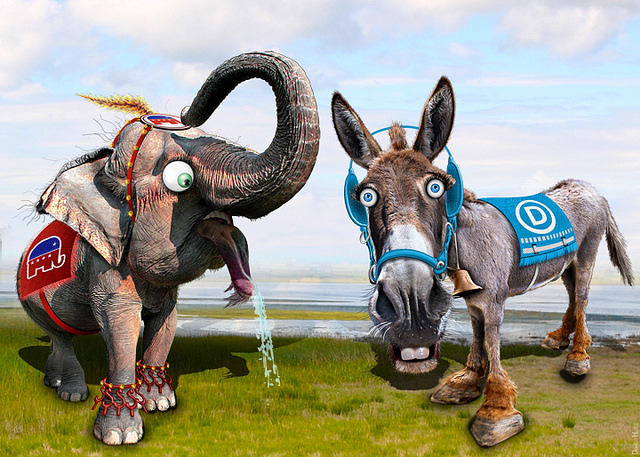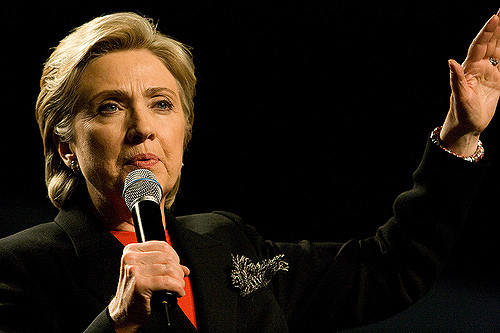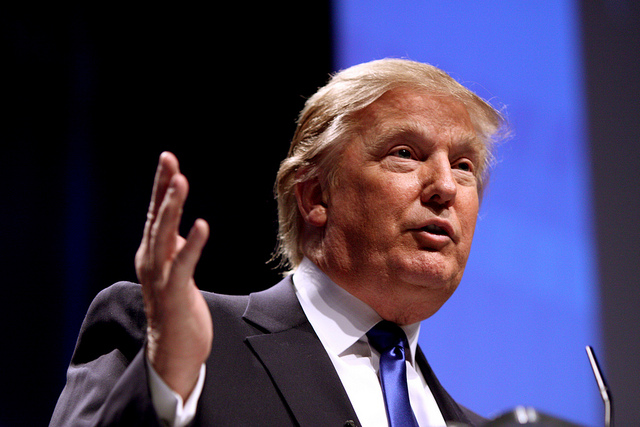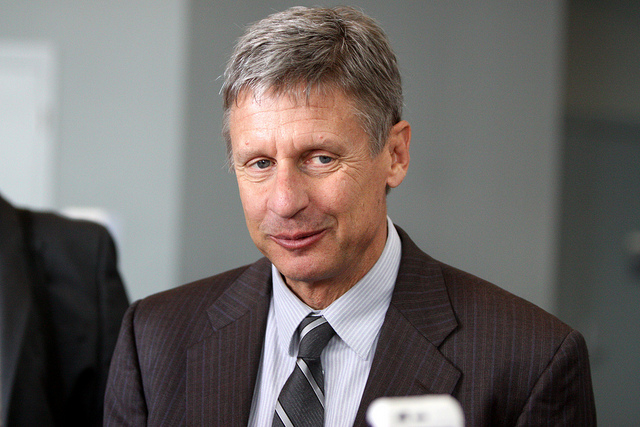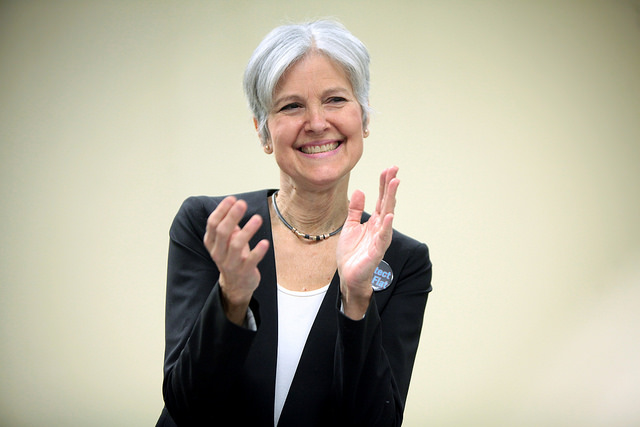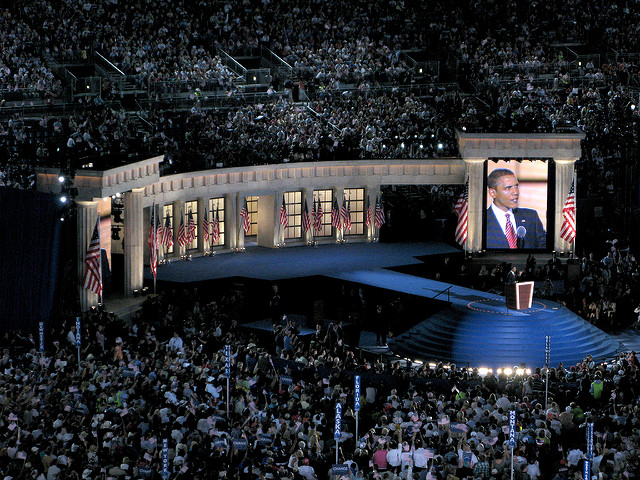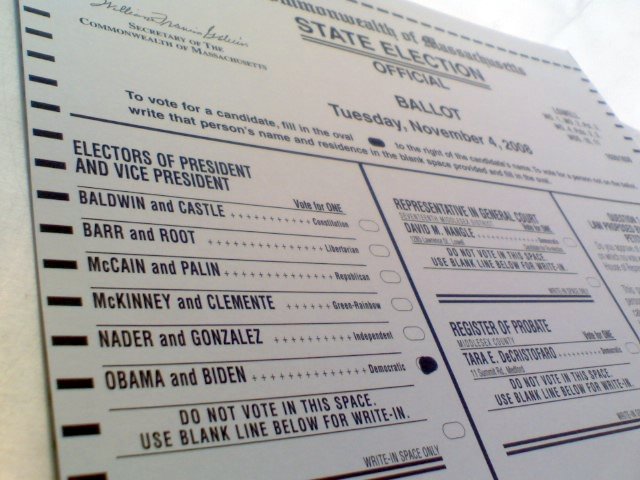The US Presidential Election Posted by sasha on Nov 1, 2016 in Culture, English Language, News
Unless you’ve been living under a rock for the past year, you’ve probably heard a lot about the upcoming presidential election in the US. For many, the process is confusing and overwhelming. To help you understand how the country elects its top leader, here’s a quick glance at the US presidential election.
The Parties
When the Constitution was signed back in 1787, there were no political parties in the United States. Since political parties were established, the country has always been dominated by just two. In modern times, these have been the Republicans and Democrats. These two parties have won every presidential election since 1852. While these parties dominate US politics, there are a few others that don’t get as much attention. Major third parties include the Libertarian and Green Party. Some candidates and voters choose not to align with any major party. They are known as Independents.
The Candidates
According to the 22nd Amendment to the Constitution, the president cannot serve more than two 4-year terms in office. This prevents the incumbent president, Barack Obama, from running for a third term. Here are the major candidates running for the highest office in the land in 2016:
Democratic Party – Hillary Clinton
Hillary Clinton is seeking to make history this year by becoming the first ever woman to be elected as President of the United States. She has been in politics for over 30 years, having served as First Lady while her husband Bill Clinton was president, a US Senator from New York, and the Secretary of State.
Republican Party – Donald Trump
Far from your average politician, Donald Trump is famous as a billionaire real estate mogul and reality television star. You’ve probably seen his name before, on his many office towers, hotels, golf courses, and casinos. His candidacy has been full of controversy, from his calls to build a border wall with Mexico to his proposal to ban Muslims from entering the United States.
Libertarian Party – Gary Johnson
Gary Johnson previously served as governor of New Mexico as a Republican. He changed to the Libertarian Party in 2011 during his campaign to win the White House in 2012. He received 1.3 million votes in that election, the most ever for a Libertarian candidate. While he is not expected to win any states, he does have the most support amongst third party candidates.
Green Party – Jill Stein
Dr. Jill Stein graduated from Harvard Medical School and practiced internal medicine for 25 years. She has unsuccessfully run for office on a few occasions. In 2002 and 2010 she ran for governor of Massachusetts, and she also ran as the Green Party candidate in the last presidential election. She has been polling around 2-3% nationally in the 2016 election.
Third parties generally do not get a lot of attention in US elections. Neither Gary Johnson nor Jill Stein participated in any of the three major debates. There are also numerous other third parties, most of which nobody has ever heard of. What do you think of a guy who calls himself Joe Exotic and runs a private zoo as president? He’s running, but he probably won’t get many votes.
The Process
Perhaps the most confusing part about the US presidential election is the process by which candidates are chosen and how a winner is eventually decided. While this could be a whole post on its own, I’ll try to keep things simple for you.
Nominating Process
First of all, the major parties have to nominate a candidate. This happens through a series of primaries and caucuses. Each state has one, starting with Iowa and New Hampshire in January and continuing through until June. Voters are not exactly choosing a candidate themselves in this process – they are voting to send delegates to the party’s convention. If it sounds confusing, that’s because it is. Even many Americans don’t really understand the process.
Conventions
Generally, each major party will have a clear candidate by the time of the convention. These are big gatherings to officially nominate the party’s candidate. It’s also when the running mates are officially selected; that is, their choice for Vice President. Another important aspect of the convention is introducing the party platform. This is the agenda that they hope to enact if elected.
Campaign
Once the major candidates are chosen, the campaign is in full swing. The candidates will travel all across the country giving speeches and hosting events to try and convince people to vote for them. A lot of money is spent on advertising, especially in swing states where the outcome is uncertain. During this time, there is also a series of debates – three presidential debates and one vice presidential debate. Here, the candidates face off and answer questions from a journalist or from the audience about what they would do in office.
Election Day
This year, the election will take place on Tuesday, November 8th. Why is the election on a Tuesday? Back in 1845, Congress had to choose a day for Americans to vote. At the time, most people worked on farms and traveled by horse-drawn carriage. They needed a day to travel to the county seat, a day to vote, and a day to travel home. To not interfere with the day of worship (Sunday) or market day (Wednesday), Tuesday was chosen.
On election day, people will head to their local polling place to cast their ballot. Another confusing aspect of the American election is that the candidate who gets the most popular votes does not necessarily win. Rather, the election is chosen by the Electoral College. The number of electors in each state is equal to the number of members of Congress that state has. As such, states with larger populations such as California, Texas, and New York have far more electoral votes than smaller states such as Wyoming, Delaware, or Vermont. To win the election, a candidate needs to receive a majority of electoral votes, which is currently 270. Watch this video to better understand the process:
And that’s how the President of the United States is chosen! Hopefully now you have a better idea of what’s going on. If all of this election stuff is making you go crazy, don’t worry – it’s almost over!

Build vocabulary, practice pronunciation, and more with Transparent Language Online. Available anytime, anywhere, on any device.
About the Author: sasha
Sasha is an English teacher, writer, photographer, and videographer from the great state of Michigan. Upon graduating from Michigan State University, he moved to China and spent 5+ years living, working, studying, and traveling there. He also studied Indonesian Language & Culture in Bali for a year. He and his wife run the travel blog Grateful Gypsies, and they're currently trying the digital nomad lifestyle across Latin America.



